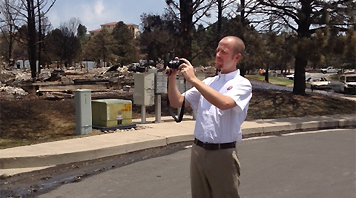|
RMIIA News Releases7951 E. Maplewood Avenue, Suite 110 Contact: Carole Walker, Executive Director As Old Man Winter Makes His First Major Appearance in Colorado—Drivers and Homeowners Need to Gear Up on Their Insurance Know How! October 25, 2011 – With a week that started with 80 degree temperatures Coloradans may be a bit rusty on how to handle winter weather conditions, so an insurance reminder can take the shock value out of what is expected to be the state's first major snow storm of the winter season. "Forecasters are predicting wet, heavy snow that can cause major damage and it's a reminder that homeowners need to take steps to protect their property and finances from winter weather," says Carole Walker, Executive Director of the Rocky Mountain Insurance Information Association. "In addition, drivers may need a refresher course on how their insurance works before they are in the middle of what could be a messy, dangerous morning commute." Drivers need to be aware of how they are covered if they are involved in an accident with another vehicle verses tree limbs falling on a car due to heavy snow, or for that matter if they slide into a tree. Comprehensive coverage comes into play if your car is hit by a falling object, while collision coverage protects you when you crash into a tree or a wall. Liability insurance is the primary coverage for a car collision. Standard homeowners policies will cover most kinds of damage that result from severe winter weather, such as house pipes freezing and bursting or water seepage into the house as the result of ice forming in gutters and causing water to back up under roof shingles. You would also be covered if the weight of snow or ice damages your house. If you do discover damage, make temporary repairs and keep receipts, as those costs may be reimbursed under your claim settlement. For more information on insurance & Colorado winter storms: Winter Driving & Accident Alert Insurance Advice At the Scene of an Accident: Follow these tips if no one is injured and the jurisdiction is under accident alert:
If you run into an unattended vehicle or object, try to find the owner. If you can't, leave a note containing your name, address and phone number. Record the details of the accident. Advice for homeowners to protect their property: Preventing snow build-up and melting damage is to make sure there is proper drainage:
For more consumer information on insurance topics logon to www.rmiia.org. ### Rocky Mountain Insurance Information Association is a non-profit consumer information organization. Affiliated with the Insurance Information Institute, RMIIA has been serving consumers and the media since 1952. |
|
303-790-0216 • 800-355-9524 • Contact Us • Legal Notice, Disclaimer & Terms of Use
Home • About RMIIA • News Room • P&C Insurance Industry • Auto • Homeowners • Business • Catastrophes • Agent Resources • Events & Education • Brochures

